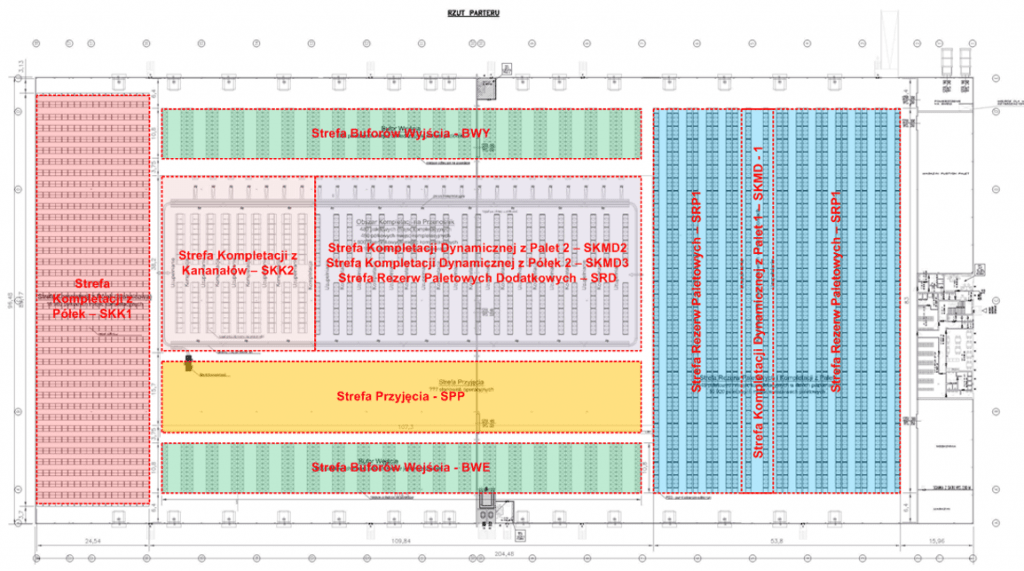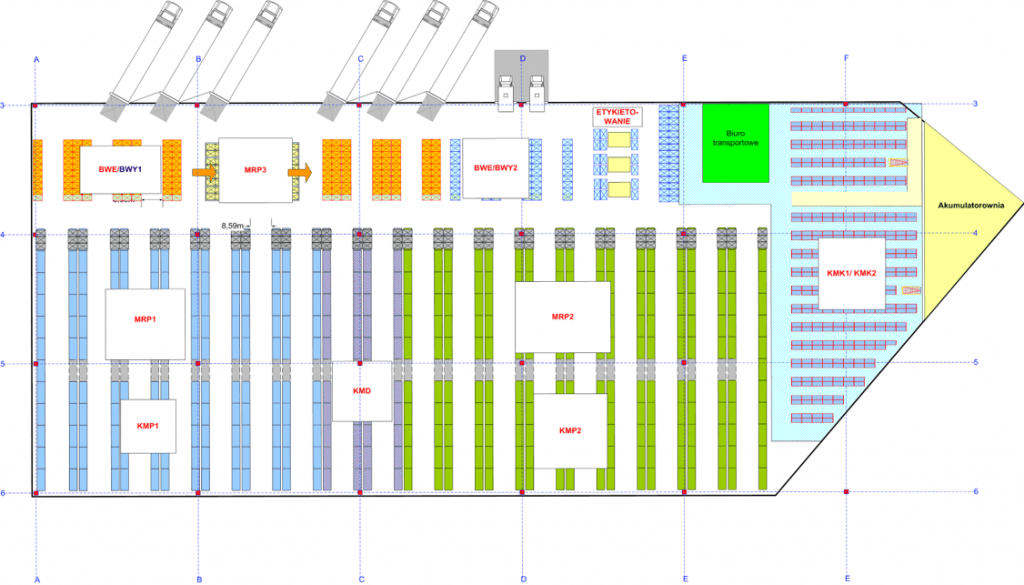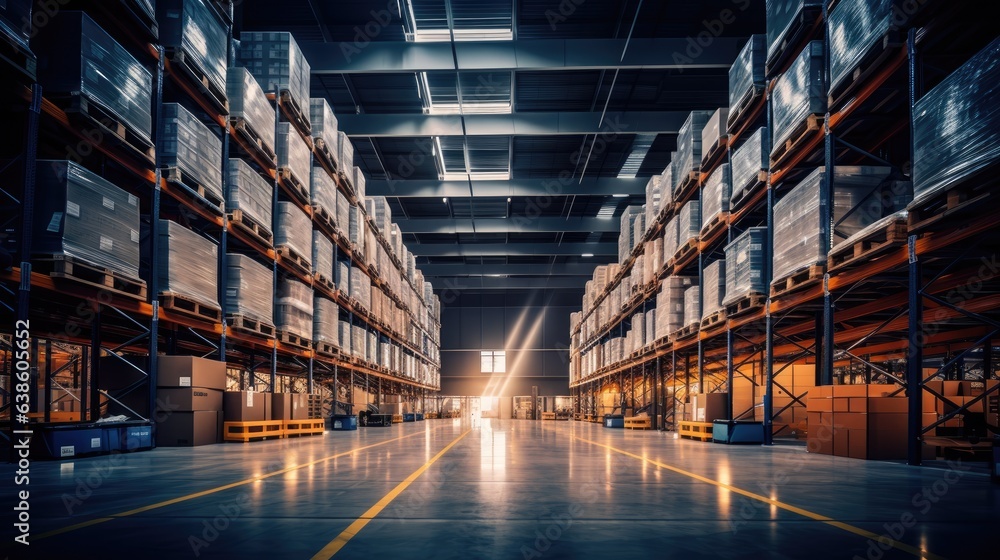Contact our Sales Department
logifact® Project
Logistics Process Design
Consultancy and design services
We offer consultancy and design services closely focused on material flows.
We shape warehouse logistics processes to ensure the optimal use of available resources and the smooth flow of the physical stream of goods.
Our offer is addressed to companies that are planning for or are in the process of constructing a new warehouse or planning the modernization of existing infrastructure and work organisation.
Logifact-Systems provides comprehensive services ranging from logistics audits, through logistics consultancy and design to the implementation of a professional WMS.
Our consultancy and design services include:
- Logistics audits
- Logistics consultancy
- Optimisation of logistics for existing warehouses and production halls
- Logistical design for new warehouse or production projects.
Warehouse logistics audit
On-site analysis of current processes and logistic set up by an experienced logistician. On that basis, a report is prepared with recommendations for possible short-term (organisational) and long-term (investment) improvements.
Logistics consultancy
The scope of consultancy includes the organisation and flow of logistics processes, elements of warehouse infrastructure, warehouse management systems and additional technology supporting warehouse operations (IT systems, warehouse automation, radio mobile terminals, automatic identification technology, assistive devices, etc.).
Logistics optimisation
Logistics projects focused on:
- Increasing efficiency by improving logistics processes
- Better utilizing existing resources in warehouses and production halls.
Logistics design
Based on a thorough analysis of current material flows, stocks, warehouse organization and forecasted growths, our specialists develop a concept for the functional and spatial layout of the new warehouse, taking into account the specifics of the available real estate.
Design services include:
- The analysis of current warehouse processes, material flow, stock and warehouse organisation in terms of size and structure
- The analysis of the quantitative, qualitative and organisational factors having a significant impact on the future functioning of warehouse logistics within a defined time horizon
- The development of planning assumptions based on forecasted changes in relevant parameters (such as delivery structure, amount and structure of SKUs, sales, inventories, work organization, etc. Planning assumptions include:
- necessary data to describe the target logistics system which form the basis for future project planning work,
- a diagram of the target material flows in the warehouse,
- framework for the design of warehouse processes and the future organisation of warehouse operations,
- The development of alternative concepts for the functional and spatial layout of the warehouse, taking particular account of:
- the definition of logistics processes in the warehouse and description of the work organisation
- the designation and dimensioning of the functional areas of the warehouse (goods in, goods out, storage areas, picking, VAS, cross-docking, etc.).
- footprint of the warehouse or adaptation to the existing conditions where possible
- proposal for the location of the warehouse on the land plot (if required with the assistance of an architect),
- the selection and dimensioning of the necessary technical equipment, including:
- zone-specific storage systems (various types of static shelving, dynamic shelving, automated systems)
- picking systems (for manual and automated processes)
- internal transport systems (various types of forklifts including semi-autonomous and autonomous ones, conveyors)
- workstations in the various functional areas of the warehouse,
- determination of the necessary number of employees for the proper operation of the adopted logistics processes,
- the estimation of investment costs.
- The preparation and execution of tender procedure for the warehouse, including:
- the development of a timetable for the commissioning of the new facility,
- the preparation of tender documents for the technical equipment of the warehouse included in the concept,
- the analysis and comparison of offers,
- participation in negotiations with potential suppliers,
- advice on selecting the best offers.
Example projects





 22 546 19 53
22 546 19 53  sales@logifact.pl
sales@logifact.pl  fill out the form
fill out the form 
